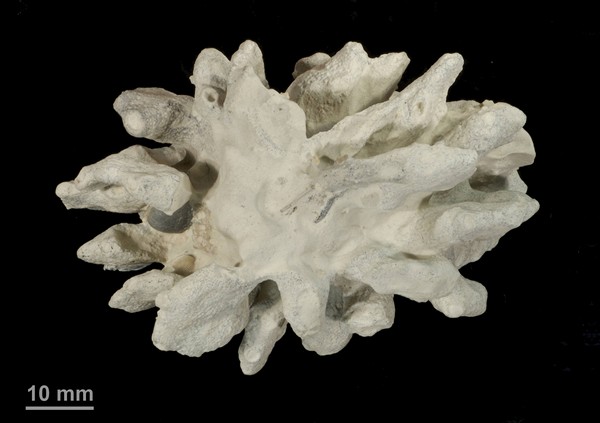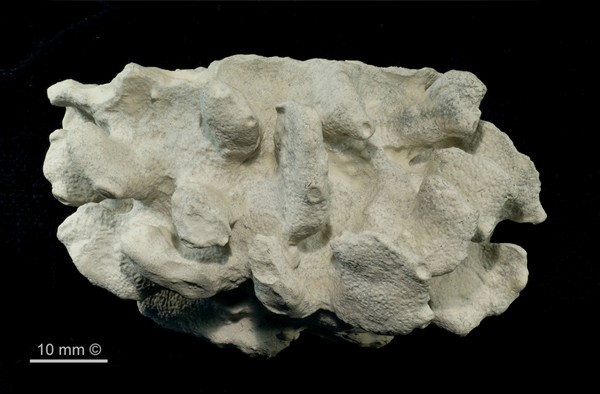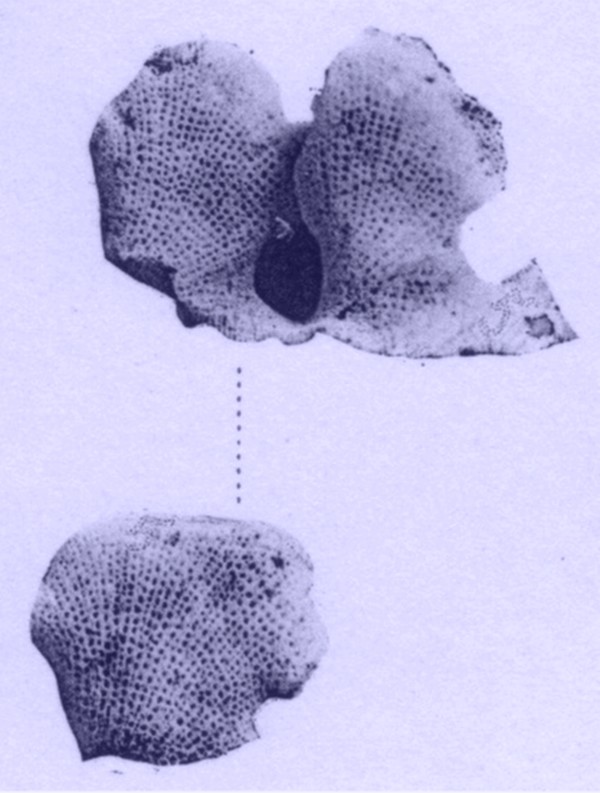
Figure 1 - Balantionella elegans, oblique view.
Alemannia, Höver, basiplana Zone

Figure 2 - Balantionella elegans, bottom view.
Alemannia, Höver, basiplana Zone

Figure 3 - Balantionella elegans, side view.
Alemannia, Höver, basiplana Zone
Synonyms:
none
Occurence:
Alemannia, Höver, Lower Campanian (senonensis zone). Very rare.
Misburg, Lower Campanian. Very rare.
Oberg, Lower Campanian. Very rare.
Balantionella elegans was described by Schrammen (1902) from Misburg and Oberg as a new species. Later, Schrammen (1912) errected the new family Balantionellidae.
Schrammen's (1912) description suggests an incrusting mode of occurrence. However, in the light of the new specimen presented here in Figures 1, 2 and 3, it is obvious that Balantionella elegans must have had a tubular to funnel-like habit, with numerous radial protrusions of the side wall. These protrusions have bag-like (Schrammen, 1912) shapes, with parieral oscula along their edges.
The new specimen from Höver is a midle section, without a preserved top margin or base.
The dermal side reveals numerous tiny ostia, 0.2 to 0.3 mm wide, which are arranged in subparallel to fan shaped arrays.
